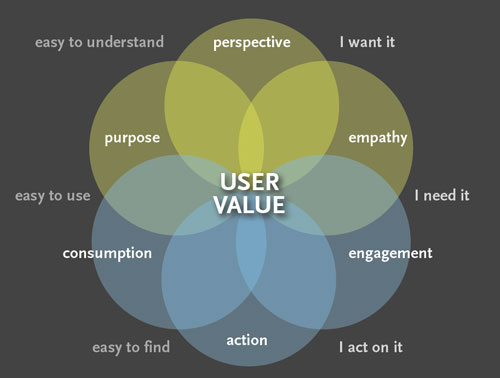Creating User-Centered Websites: Part 1, How to Design for Results
Designing a user-centered website means putting your user’s needs, goals and motivations at the beginning of the process and harmonizing those needs with your expertise and “persuasive guidance.”
Have you ever been frustrated by a confusing automated voice system? Sometimes it feels like they were designed by machines, for machines, and not humans. It’s not unlike being trapped on a bad website. Do any of these thoughts sound familiar?
- This site doesn’t work.
- It takes too long to find anything.
- The site seems clunky and difficult to use.
- I can’t find what I’m looking for.
- I have to click too many times to do anything.
- This content isn’t meaningful to me.
A website with all the bells and whistles is virtually useless if clear navigation, basic usability, and brand reinforcement are absent. Yes, websites should be cool, but they should also be functional and designed with the user in mind. Balancing the needs of your users with your business, brand, financial and technology needs is the key to creating a user-centered site that delivers.
Designing a user-centered website means putting your user’s needs, goals and motivations at the beginning of the process and harmonizing those needs with your expertise and “persuasive guidance.”By designing for user preference, you can remove barriers, such as clicks or unnecessary content, which inhibit user engagement and erode ROI. (Want to know what we mean by that? Watch the cat video above!)
A good website should be designed with:
- Empathy for the user to initiate engagement
- Perspective on the desired content for user consumption
- Purpose with the right user actions in mind
At the converging center of these ideas is user value.

It is important to understand that in order to convert your business goals into website ROI, you have to involve users in the beginning and stay user-centric throughout the process.
Stay tuned for Part 2: The Key to Designing User Experiences of the Future
